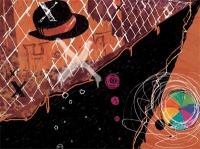Hats off to history
As adland teeters on the brink of neglecting its heritage in pursuit of the new, David Bernstein wonders how the History of Advertising Trust’s archive can become an active resource

Who called what ’the richest and most faithful reflection that any society can ever make of its entire range of activities’ ? Answer/ Marshall McLuhan on ’the advertisements of our time’, words recycled by Barry Cox, the chief executive of the History of Advertising Trust in an appeal to the charity’s friends, patrons and donors.
Two knights of the realm join him in encouraging the ad industry to save Hat from extinction, 36 years after its foundation. Sir Martin Sorrell reminds them that ’our history contains work and wisdom of priceless value’. Hat president Sir John Hegarty affirms that ’history isn’t just about the past. It’s about the future’.
Hat’s future is precarious: donations fell 22 per cent and 19 per cent respectively in the past two years. Result: a shortfall of £80 000. Sorrell has made good one eighth of that. Advertising’s professional bodies have offered a committee, access to membership and complementary premises, but nothing approaching a levy. Only 11 of the top 40 agencies contribute to Hat. Why? According to Campaign journalist John Tylee (14 May), Hat chairman Graham Hinton points to a ’disconnection between the archive and an industry employing an ever more youthful workforce’.
Another reason – which I as a governor own up to – is that Hat has never presented its case effectively. The National Archives makes a better fist of it. Its booklet Corporate Memory, echoing Hegarty, manages to take the archaic out of archive, stress the future and resolve the paradox of heritage inspiring tomorrow. Archives, it says, increase brand knowledge, reinforce brand differentiation, protect the brand’s assets and are the source of innovation. Can you properly understand a brand without studying its archives?
Recession provides ample rationalisation for short-term thinking, particularly in an industry that treats the word ’new’ as its mantra. Convincing pragmatists and pessimists of otherwise is difficult. Hat’s three million items, professionally archived and digitised, easily and freely accessed, represent an inimitable source and resource – once you know it’s there and experience it. And maybe that’s the problem. Source and resource are passive. How do you (we) instigate usage and experience? How does Hat’s treasure become active, move beyond source and resource to force, an industry force? A working party is tackling this. A long-term vision. Though unless the short-term deficit is managed there will be no long term.
Hat is attempting to enlist financial help from those who appreciate the need to capture ephemera on the wing, wish to preserve and recognise creativity, believe in advertising’s contribution to the social history of the nation and who, having earned good money in good times, are ready to play a part in ensuring new times, equally though differently good.
And if they are still not convinced that the past has anything to teach the future, let me invoke a third knight of the realm who spoke thus in 1770: ’The more extensive your acquaintance is with the work of those who excelled, the more extensive will be your power of invention – and what may appear still more like a paradox, the more original will be your conceptions.’
Sir Joshua Reynolds, addressing members of the Royal Academy, advocated not imitation, which he abhorred, but invention, which he defined as ’a new combination of images which have previously been gathered and deposited in the memory; nothing can come of nothing’.
May those last five words be deposited in the memories of the recipients of Hat’s appeal.
David Bernstein was founder of The Creative Business and is a creative consultant
-
Post a comment




